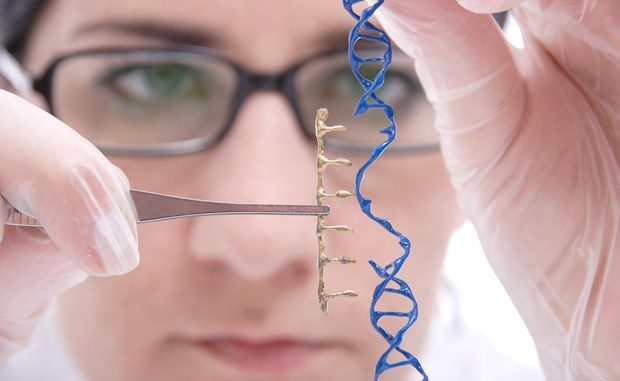
Breakthrough In Gene-Editing
Source: SNU Media
April 17, 2017
Professor Kim Jin-Soo and training researcher Kim Daesik, both of the Department of Chemistry, were part of a research team at the Center for Genomic Engineering, within the Institute for Basic Science (IBS), that proved that a newly developed gene editing technique will be helpful in combatting genetic mutation that causes diseases such as cystic fibrosis, sickle cell anemia, and color blindness.
Authors have used CRISPR-Cas system of Streptococcus pyogenes as programmable RNA-guided endonucleases (RGENs) to cleave DNA in a targeted manner for genome editing in human cells.
Authors have used CRISPR-Cas system of Streptococcus pyogenes as programmable RNA-guided endonucleases (RGENs) to cleave DNA in a targeted manner for genome editing in human cells.
The field of biology has been buzzing with the latest developments of gene editing tools. The most current tool is called CRISPR — third-generation DNA “scissors” that are less expensive and more efficient than previously available editing tools. CRISPR-Cas9 and CRISPR-Cpf1 edit out faulty DNA sequences resulting from random DNA deletions and insertions.

Last year, scientists figured out a way to substitute and correct just one of the four basic nucleotides: Adenine (A), Cytosine (C), Guanine (G), and thymine (T), whereas previous tools could not modify the strand at such a fine level. This discovery represents a big leap forward for the scientific community, considering that several critical diseases — such as cystic fibrosis, sickle cell anemia, and color blindness — are caused by point mutations, and not by random insertion or deletion.
This new base-editing scissors was a variation of the existing CRISPR-Cas9, but fused with an enzyme alled cytosine deaminase, which would replace C with T. Despite the excitement of this new development, scientists were still unsure if it was applicable to the gene that they were targeting, or if it was functioning outside of the DNA bases.
The team headed by Professor Kim proved the accuracy of the tool by modifying and using an error-checking technique called Digenome-seq. In the process, they also improved the computer program (Digenome 2.0) to detect “off-target” operations (if the editing tool strays from the genome, it is called off-target). The program also compared different guide RNAs which worked to lead the editing tool along the genome to spot the targeted base.
This significant finding was published on the cover of the academic journal Nature Biotechnology.
Written by Ho Jung Annie Hwang, SNU English Editor, annieohan@snu.ac.kr
Reviewed by Professor Travis Smith, Department of Asian Languages and Civilizations, tlsmith@snu.ac.kr
Reference: Gaj T, Staahl BT, Rodrigues GM, Limsirichai P, Ekman FK, Doudna JA, Schaffer DV. Targeted gene knock-in by homology-directed genome editing using Cas9 ribonucleoprotein and AAV donor delivery. Nucleic Acids Res. 2017 Mar 2. doi: 10.1093/nar/gkx154. [Epub ahead of print] PubMed PMID: 28334779.








Leave a Reply